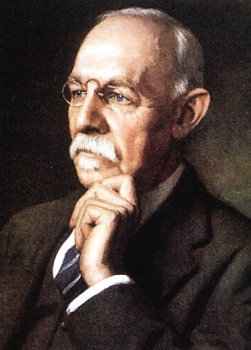American surgeon who pioneered in the development of clinical techniques and tools and in surgical training.He was a staff member at various New York hospitals from 1881 to 1887.While still a student, Halsted developed his continuing interest in anatomical dissection, studies of asepsis (exclusion of disease-producing organisms), and application of experimental methods to clinical problems.
Education
Halsted was educated at home by tutors until the age of ten, when he was sent to boarding school in Monson, Massachusetts. He didn't like his new school and even ran away at one point. He was then sent to Andover where he graduated in 1869.
At Yale, Halsted excelled in athletics. He was captain of the football team, played baseball and rowed crew.
Career
In 1889 he became surgeon in chief of the newly opened Johns Hopkins Hospital and in 1893 professor of surgery and founder of the department of surgery and the residency training program at Johns Hopkins University.In 1884 he made the enormously significant introduction of nerveblocking or regional anesthesia, using cocaine by injection.






